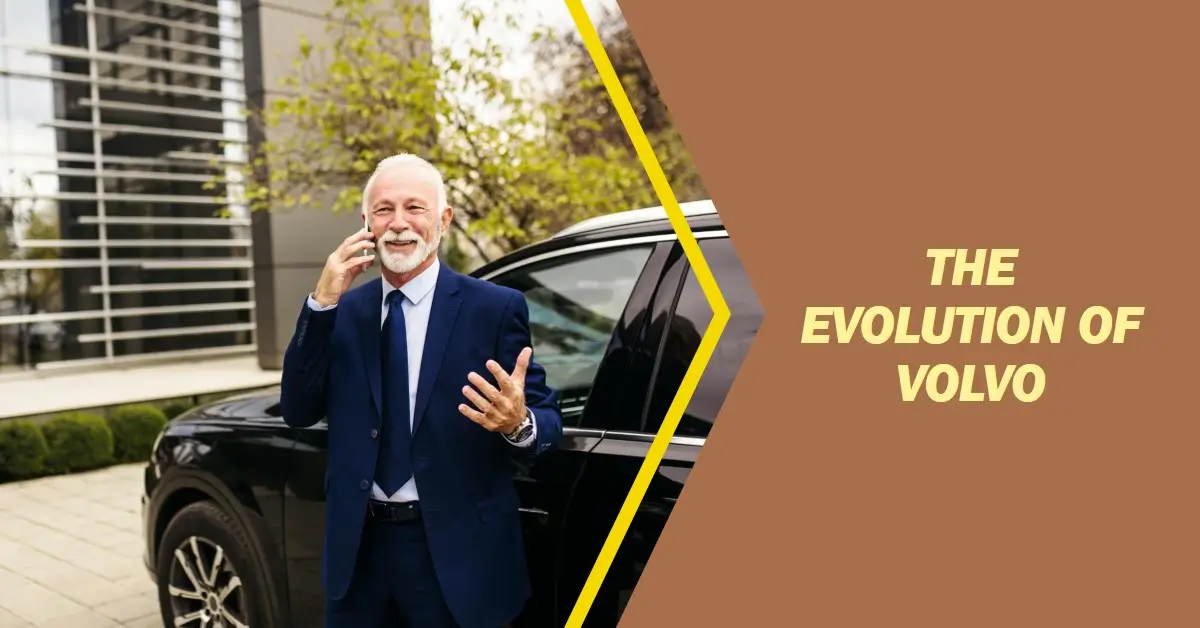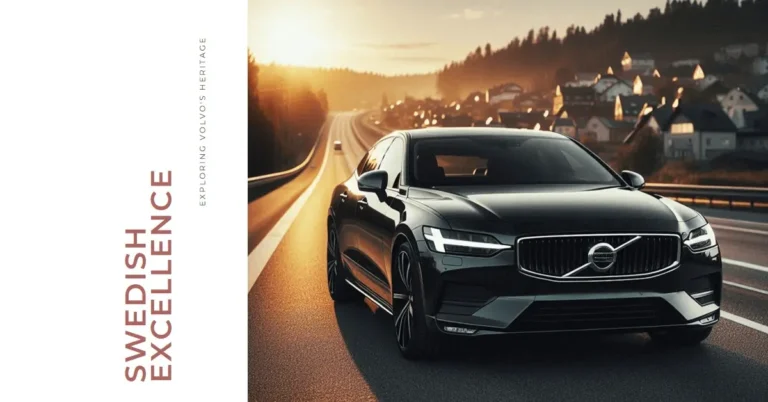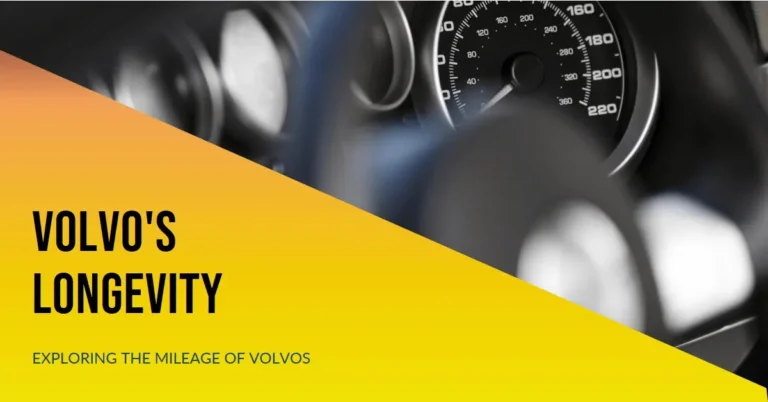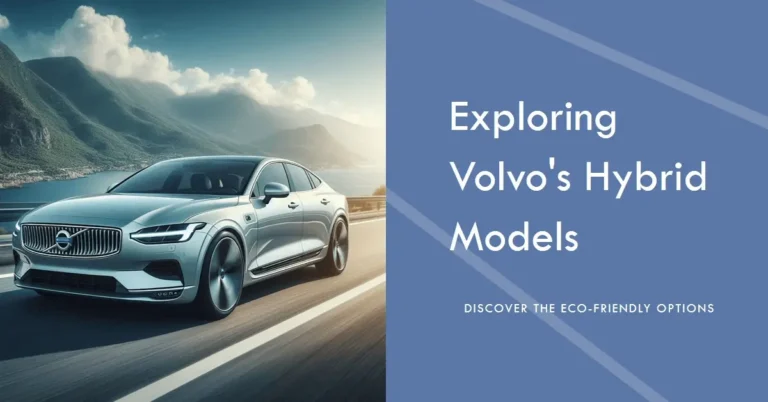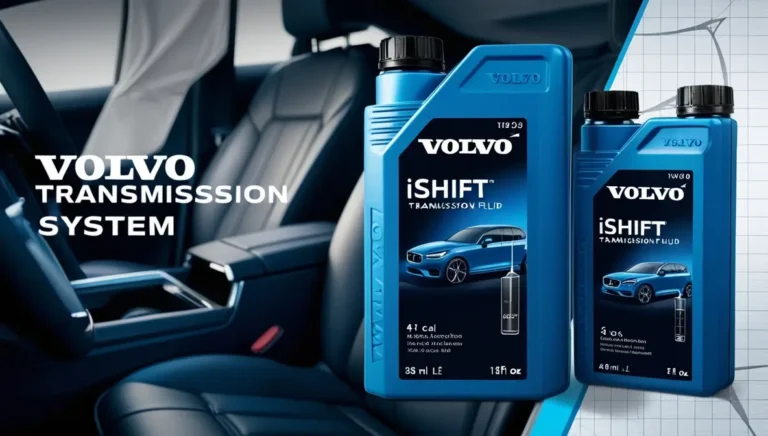Volvo History and Reputation
Ever wonder how a small Swedish car company became a global giant known for its boxy-but-beautiful designs and obsession with safety? Well, buckle up, because we’re about to take a wild ride through Volvo’s history!
Volvo isn’t just another car maker. It’s a brand that’s become synonymous with safety, reliability, and that unmistakable Scandinavian style. From its humble beginnings in Gothenburg to its current status as a major player in the automotive world, Volvo’s story is as fascinating as finding heated seats on a cold Swedish morning.
But what’s the real scoop on Volvo’s reputation? Why do people love these cars so much? Is it the safety features that make you feel like you’re driving a tank (but a really comfy one)? Or is it something else? Let’s pop the hood and take a closer look at what makes Volvo tick.
The Origins of Volvo (1927)
Founding: Safety and Innovation from Day One
Volvo’s story begins in Gothenburg, Sweden, in 1927. The company was founded by Assar Gabrielsson and Gustaf Larson, two visionaries who shared a passion for automobiles and a commitment to safety. From the very beginning, Volvo set itself apart with a core philosophy that would define its brand for decades to come: “Cars are driven by people. The guiding principle behind everything we make at Volvo, therefore, is and must remain, safety.”
This foundational principle of prioritizing safety was revolutionary for its time and would go on to become Volvo’s hallmark, influencing not just the company’s own products but the entire automotive industry.
First Car: The Volvo ÖV 4
Volvo’s first model, the ÖV 4 (nicknamed “Jakob”), rolled off the production line on April 14, 1927. The ÖV 4 was a modest open-top car designed to withstand Sweden’s harsh climate and rugged terrain. Despite its humble beginnings, producing only 280 units in its first year, the ÖV 4 laid the groundwork for Volvo’s future success.
The ÖV 4 embodied several key characteristics that would become Volvo trademarks:
- Robust construction
- Emphasis on reliability
- Adaptability to challenging driving conditions
Early Growth: Establishing a Legacy
In the years following the launch of the ÖV 4, Volvo rapidly expanded its product line. The company introduced its first truck, the Series 1, in 1928, marking the beginning of Volvo’s dual focus on passenger cars and commercial vehicles. This diversification strategy would prove crucial in establishing Volvo as a versatile and resilient automotive manufacturer.
By the 1930s, Volvo had introduced several successful models, including:
- PV651 (1929): Volvo’s first six-cylinder car
- PV654 (1933): An improved version with a more powerful engine
- PV36 Carioca (1935): A streamlined luxury model that showcased Volvo’s design capabilities
These early successes laid the foundation for Volvo’s reputation as a manufacturer of reliable, well-built vehicles that could withstand the demanding Scandinavian climate. This reputation for durability and quality would become a key factor in Volvo’s future expansion into international markets.
Expansion Post-WWII and Entry into Global Markets
Post-War Success: The PV444
The launch of the PV444 in 1944 marked a turning point for Volvo. Despite being introduced during the final years of World War II, the PV444 was designed with an eye towards the post-war market. This compact car, often referred to as the “Little Volvo,” became the company’s first true volume seller and played a crucial role in Volvo’s expansion into international markets.
Key features of the PV444 included:
- Unibody construction for improved safety and rigidity
- Affordable pricing to appeal to a broader market
- Stylish design influenced by American cars of the era
The PV444’s success paved the way for Volvo’s global ambitions, demonstrating that the company could produce vehicles that appealed to markets beyond Scandinavia.
Entry into the USA
Volvo’s entry into the United States market in 1955 was a significant milestone in the company’s history. The decision to export cars to America was bold, given the dominance of domestic manufacturers at the time. However, Volvo’s reputation for quality and durability resonated with American consumers, particularly in states like California where import brands were gaining traction.
Volvo’s success in the US market can be attributed to several factors:
- Focus on safety features that exceeded American standards
- Emphasis on fuel efficiency during a time of rising gas prices
- Positioning as a premium European brand offering value for money
The PV444 and its successor, the PV544, were instrumental in establishing Volvo’s presence in the US. By the 1960s, Volvo had become one of the top-selling European car brands in America, setting the stage for long-term success in this crucial market.
Global Production Plants
As demand for Volvo vehicles grew internationally, the company began establishing production facilities outside of Sweden. This global expansion strategy allowed Volvo to reduce shipping costs, adapt to local market needs, and increase its worldwide presence.
Key milestones in Volvo’s global production expansion include:
- 1963: Opening of a assembly plant in Halifax, Canada
- 1965: Establishment of a production facility in Ghent, Belgium
- 1999: Inauguration of a manufacturing plant in Chongqing, China
These international production facilities played a crucial role in cementing Volvo’s status as a truly global automotive brand. By manufacturing vehicles closer to their target markets, Volvo was able to respond more quickly to local demand and tailor its products to regional preferences.
Volvo’s Pioneering Role in Automotive Safety
Three-Point Safety Belt (1959)
Perhaps no single innovation has done more to cement Volvo’s reputation for safety than the three-point safety belt. Invented by Volvo engineer Nils Bohlin in 1959, this seemingly simple device revolutionized automotive safety and has saved countless lives over the decades.
The three-point safety belt’s significance cannot be overstated:
- It reduced fatalities and serious injuries in car accidents by up to 50%
- Volvo made the patent freely available to all car manufacturers, prioritizing public safety over profit
- It became a legal requirement in many countries, starting with Sweden in 1970
This invention not only saved lives but also established Volvo as the undisputed leader in automotive safety. The company’s decision to share the patent freely demonstrated a commitment to social responsibility that went beyond mere profit motives, further enhancing Volvo’s reputation.
Volvo 240 as Safety Standard
In the 1970s, Volvo’s commitment to safety reached new heights with the introduction of the Volvo 240 series. This model was so far ahead of its time in terms of safety features that the U.S. Department of Transportation purchased a fleet of 240s to serve as a reference for future safety standards.
Key safety features of the Volvo 240 included:
- Crumple zones to absorb impact energy
- Reinforced passenger compartment
- Anti-submarining seats to prevent occupants from sliding under the seatbelt
The use of the Volvo 240 as a benchmark for safety standards not only validated Volvo’s approach but also pushed the entire automotive industry to improve their safety measures. This period solidified Volvo’s reputation as the go-to brand for safety-conscious consumers.
Volvo and Technological Innovation
Renault Partnership
In the 1970s, Volvo entered into a partnership with French automaker Renault. This collaboration was driven by the need to share development costs and stay competitive in an increasingly globalized market. While the partnership didn’t result in a full merger as initially planned, it did lead to several technological advancements and shared platforms.
Key outcomes of the Volvo-Renault partnership included:
- Joint development of the PRV V6 engine, used in several Volvo models
- Shared technology in areas such as fuel injection and emissions control
- Cross-pollination of design ideas, influencing models like the Volvo 480
Although the partnership eventually dissolved, it played a crucial role in Volvo’s technological development during a critical period of automotive advancement.
1990s Innovation
The 1990s marked a period of significant innovation for Volvo, particularly with the launch of the Volvo 850 in 1991. This model introduced several world-firsts in car safety and performance, further cementing Volvo’s reputation as a technology leader.
Notable innovations in the Volvo 850 included:
- Side Impact Protection System (SIPS)
- Integrated child booster cushion
- Delta-link rear axle for improved handling and comfort
The 850 also marked Volvo’s successful entry into the world of motorsport, particularly in the British Touring Car Championship. This unexpected move helped to shed Volvo’s image as a maker of staid, boxy cars and showcased the brand’s performance capabilities.
Launch of the XC90 SUV
In 2002, Volvo made a bold move into the burgeoning SUV market with the launch of the XC90. This model represented a significant departure from Volvo’s traditional lineup and proved to be a game-changer for the brand.
The XC90’s success can be attributed to several factors:
- Innovative safety features, including roll stability control and a low center of gravity
- Spacious seven-seat configuration, appealing to families
- Combination of car-like handling with SUV practicality
The XC90 quickly became a global success, winning numerous awards and helping to redefine Volvo’s image for a new generation of consumers. It also demonstrated Volvo’s ability to adapt to changing market trends while maintaining its core values of safety and quality.
Ownership Changes and Strategic Shifts
Ford Ownership
In 1999, Volvo Cars was acquired by Ford Motor Company as part of its Premier Automotive Group. This acquisition marked a significant shift in Volvo’s history, bringing both opportunities and challenges.
Key aspects of the Ford ownership period:
- Access to Ford’s global resources and economies of scale
- Shared platforms and technologies with other Ford-owned brands
- Challenges in maintaining Volvo’s distinct brand identity
While the Ford ownership provided Volvo with increased financial stability and access to new technologies, it also posed challenges in terms of maintaining the brand’s unique Swedish character. The 2008 financial crisis put additional strain on this relationship, ultimately leading to Ford’s decision to sell Volvo.
Geely Acquisition
In 2010, Volvo Cars was acquired by Geely Holding Group, a Chinese multinational automotive company. This acquisition marked the beginning of a new era for Volvo, characterized by increased investment and a renewed focus on the brand’s core values.
Significant developments under Geely ownership include:
- Substantial investments in new product development and manufacturing facilities
- Expansion of Volvo’s presence in the Chinese market
- Renewed emphasis on electrification and autonomous driving technologies
The Geely acquisition has allowed Volvo to maintain its Swedish identity while benefiting from increased financial resources and access to the rapidly growing Chinese automotive market. This partnership has played a crucial role in Volvo’s recent successes and its ambitious plans for the future.
Volvo’s Push Towards Sustainability and Electrification
First Electric Vehicle
In line with its commitment to sustainability and innovation, Volvo launched its first fully electric vehicle, the XC40 Recharge, in 2020. This marked a significant milestone in Volvo’s journey towards electrification and underscored the company’s dedication to reducing its environmental impact.
Key features of the XC40 Recharge:
- Over 400 km range on a single charge
- Dual motor all-wheel drive system
- Integration with Google’s Android Automotive OS
The launch of the XC40 Recharge signaled Volvo’s serious intentions in the electric vehicle market and set the stage for the brand’s ambitious electrification goals.
Sustainability Goals
Volvo has set some of the most ambitious sustainability goals in the automotive industry, aiming to become a leader in the transition to a more environmentally friendly transportation sector.
Key sustainability targets include:
- Becoming a fully electric car brand by 2030
- Achieving climate neutrality across its operations by 2040
- Using at least 25% recycled plastics in every new Volvo car from 2025
These goals reflect Volvo’s commitment to not only reducing the environmental impact of its vehicles but also transforming its entire business model to align with the principles of sustainability.
Volvo’s Current Global Operations and Market Position
Manufacturing and Revenue
As of 2024, Volvo Cars operates manufacturing facilities in several countries, including Sweden, Belgium, China, and the United States. The company’s global production capacity allows it to meet demand in key markets efficiently.
Key facts about Volvo’s current operations:
- Annual revenue of approximately $32 billion (2023 figures)
- Global workforce of over 40,000 employees
- Key markets include China, the United States, and Europe
Despite challenges such as the global semiconductor shortage and the COVID-19 pandemic, Volvo has maintained a strong market position, particularly in the premium segment.
Subsidiaries
Volvo Cars is part of a larger ecosystem of automotive brands and companies, each playing a unique role in the group’s overall strategy.
Key subsidiaries and related brands include:
- Volvo Trucks: A separate entity focusing on commercial vehicles
- Polestar: A performance electric vehicle brand jointly owned by Volvo Cars and Geely
- Lynk & Co: A mobility brand offering subscription-based car ownership
These subsidiaries allow the Volvo Group to diversify its offerings and target different segments of the automotive and mobility markets.
Volvo’s Reputation Today: Quality, Safety, and Sustainability
Continued Leadership in Safety
Volvo continues to be at the forefront of automotive safety, consistently introducing new technologies and features to protect vehicle occupants and other road users.
Recent safety innovations include:
- Run-off Road Protection: Helps prevent and mitigate accidents where the car leaves the road
- City Safety with Intersection Collision Avoidance: Assists in avoiding collisions at intersections
- 360-degree camera system for improved visibility and parking assistance
These ongoing innovations help maintain Volvo’s position as a leader in automotive safety, a reputation it has cultivated for nearly a century.
Consumer Trust
Volvo’s long-standing commitment to quality and safety has fostered a high level of consumer trust. This trust is reflected in brand loyalty metrics and customer satisfaction surveys, where Volvo consistently ranks among the top automotive brands.
Factors contributing to Volvo’s strong consumer trust include:
- Consistent delivery on safety promises
- High build quality and reliability
- Transparent communication about sustainability efforts
This trust is a valuable asset for Volvo, helping to differentiate the brand in a highly competitive market.
Environmental Responsibility
In recent years, Volvo has placed increasing emphasis on environmental responsibility, recognizing the urgent need to address climate change and reduce the automotive industry’s environmental impact.
Key initiatives in this area include:
- Commitment to electrification across the entire model range
- Efforts to reduce carbon emissions throughout the supply chain
- Focus on sustainable and ethical sourcing of materials
These efforts not only contribute to a more sustainable future but also resonate with increasingly environmentally conscious consumers, further enhancing Volvo’s reputation.
Frequently Asked Questions about Volvo History and Reputation
What was the first Volvo car?
The first Volvo car was the ÖV 4, nicknamed “Jakob,” which was introduced in 1927. It was an open-top car designed to withstand Sweden’s harsh climate and rugged terrain.
What is Volvo most known for?
Volvo is most known for its commitment to safety. The company has pioneered numerous safety innovations, including the three-point safety belt in 1959, which has become a standard feature in all modern cars.
When did Volvo introduce its first SUV?
Volvo introduced its first SUV, the XC90, in 2002. The XC90 quickly became a global success and helped redefine Volvo’s image for a new generation of consumers.
Who owns Volvo now?
Volvo Cars is currently owned by Geely Holding Group, a Chinese multinational automotive company. Geely acquired Volvo from Ford Motor Company in 2010.
Is Volvo a leader in electric vehicles?
While Volvo was not among the first to market with electric vehicles, it has made significant strides in recent years. The company has committed to becoming a fully electric car brand by 2030 and has introduced several electric and hybrid models. Volvo’s subsidiary, Polestar, is also focused exclusively on performance electric vehicles.
In the end, Volvo’s history and reputation are characterized by a unwavering commitment to safety, quality, and innovation. From its humble beginnings in Sweden to its current status as a global automotive leader, Volvo has consistently pushed the boundaries of what’s possible in automotive design and technology. As the company looks to the future, its focus on sustainability and electrification promises to keep Volvo at the forefront of the automotive industry for years to come.

